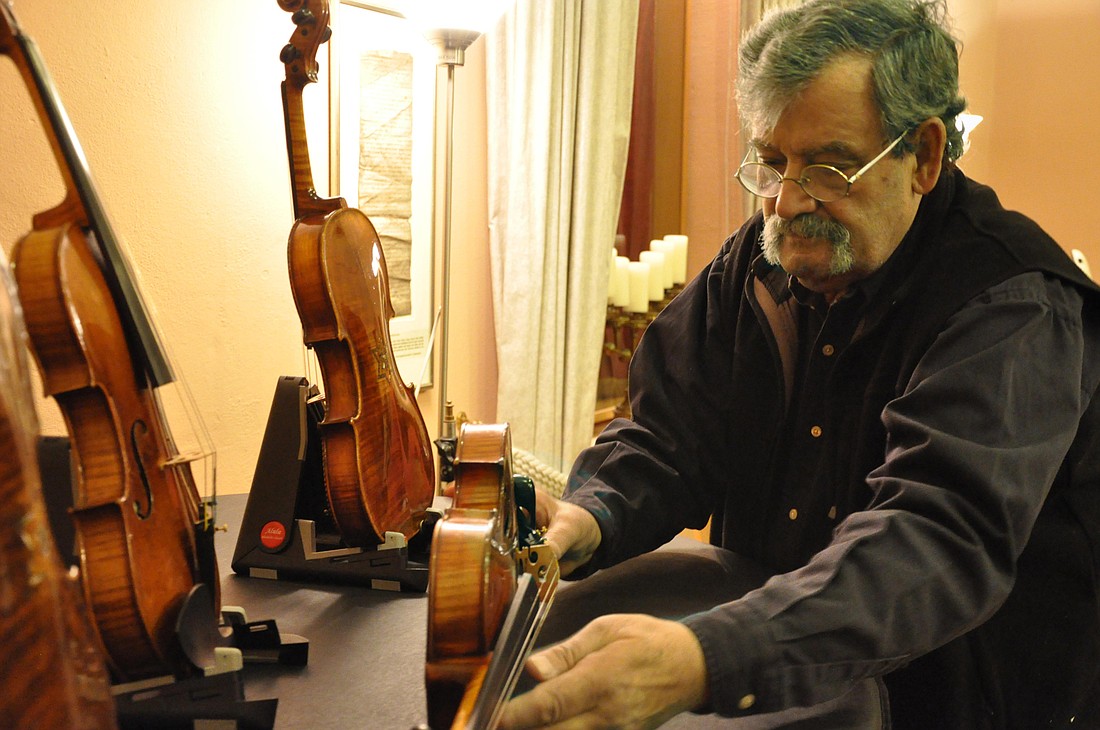- April 18, 2024
-
-
Loading

Loading

Amnon Weinstein is one of the world’s most respected violinmakers. His talented, weathered hands give new voice to silenced instruments. They fight a greater silence in the process. That struggle is his life’s work. It’s a great work. But it had a small beginning.
In 1996, a man asked Weinstein to restore a violin played by a Jewish concentration camp inmate during World War II. Weinstein was deeply moved. His parents had fled the Nazi genocide in 1938. They escaped to Palestine. But most of his other relatives didn’t make it out alive.
Weinstein lovingly restored that first violin. From that day on, he had a new mission in life. He tracked down and restored scores of other violins played by Jews in ghettos, forest hideouts and concentration camp orchestras in the time of Nazi horror. For years, he worked alone in a cramped basement workshop in Tel Aviv, Israel. Then his son, Avshalom, added two more helping hands. Working together, they’ve now restored more than 60 string instruments that escaped the fires of the Holocaust. Weinstein calls them the “Violins of Hope.” Why?
“Because where there’s music, there’s hope,” he says.
Living music is what matters to Weinstein. When he looks for hope, he finds it there. Preserving a collection of silent artifacts in sterile glass cases has never been his goal. Violins are meant to be played. And the Holocaust violins he’s restored to life have been played around the world.
This month, they’re playing close to home.
Weinstein is touring our area with 16 restored violins in a series of concerts and events sponsored by the Jewish Federation of Sarasota-Manatee and the Mazur Family Fund. You can see these precious instruments on display. And also hear their songs.
For Weinstein, those haunting notes are always a victory. In an act of unfathomable evil, the Nazis tried to erase and silence the Jewish people. The “Violins of Hope” prove they failed.
Against all odds, these violins still make music. Transient notes that hang in air. Ephemeral, but defiantly indestructible.
As Weinstein observes, the violin has been vital to Jewish life for centuries. A classical instrument for such virtuoso violinists as Itzhak Perlman, Pinchas Zukerman and Shlomo Mintz, true. But also an instrument for the common man. As Chagall so joyfully celebrated in his paintings.
But why the violin? Why not the grand piano?
The reasons were partly spiritual, partly practical. Orthodox Jews faced religious prohibitions in the arts of painting, sculpture and dance. Music was one of their few available artistic outlets. Violins were also cheap, light, and easy to carry. When persecution forced Jews to flee, they could quickly grab their violins and run.
But the Holocaust eclipsed any pogrom of the past. Millions of Jews — and untold thousands of Jewish musicians — had nowhere to run. But their music didn’t stop.
Many Jewish refugees and partisans defiantly held onto their violins. And played them in forests and secret places. Yes, the Nazis confiscated musical instruments belonging to Jewish people. Verboten, of course. But they made one cruel exception.
Inmate orchestras were common in concentration camps. The Nazis had twisted reasons for this. Sometimes crowd control — a way to distract and pacify Jewish inmates. At other times, a cynical public relations stunt to distract the rest of the world — like the showpiece classical orchestra of the phony “Jewish village” of Theresienstadt.
But Jewish musicians had their own reasons to keep playing.
Weinstein said almost all of the surviving concentration camp musicians owed their lives to their instruments. The music they played lifted them above their cruel, day-to-day reality. It gave the musicians hope. And did the same for their fellow Jewish inmates.
Hope is a stubborn thing.
The legacy of Jewish hope drives Weinstein to restore every Holocaust violin he can get his hands on. And make them speak again.
And that’s a deliberate choice of words.
Out of all the musical instruments, the violin comes closest to the sound of the human voice. Listen closely to these Violins of Hope. You’ll hear the human stories behind each one.
“That story could be the story of a man, woman or child,” Weinstein says. “Each story starts with one violin — but it involves the pain and horrors of a person, a family, a people, and the entire history of World War II. Each instrument helped save the lives of one person or a family. Each signifies a person, a tradition, and a lost soul. Each has its own story, its own voice. Join them together, and it is like the voices of a forest. Those voices of hope deserve to be heard.”